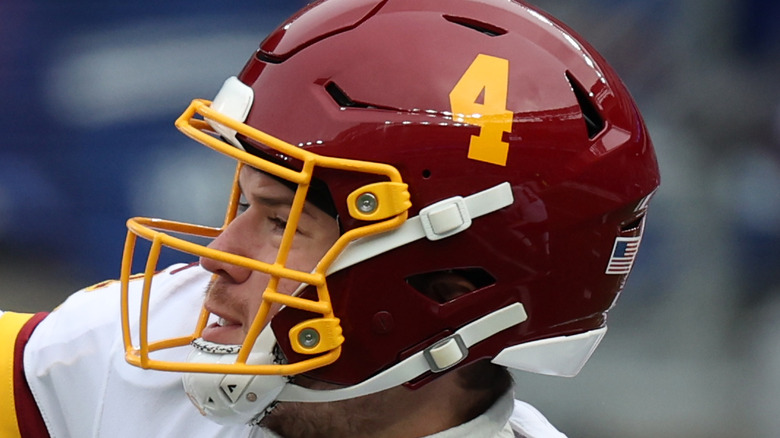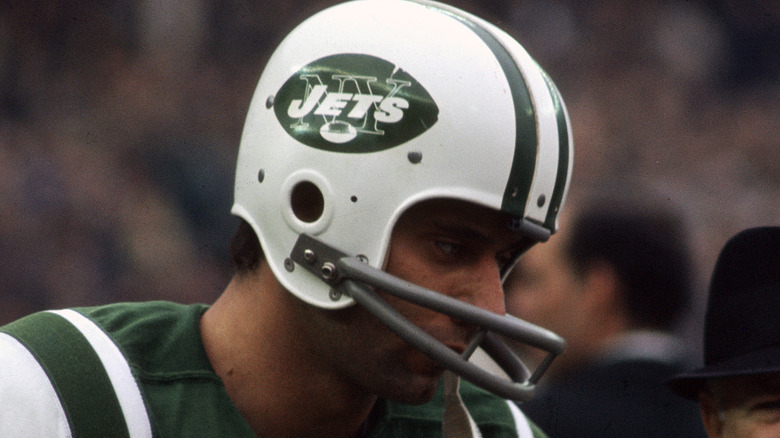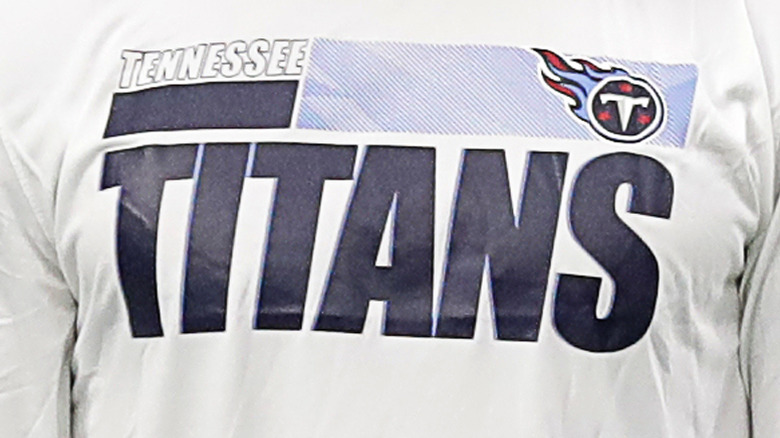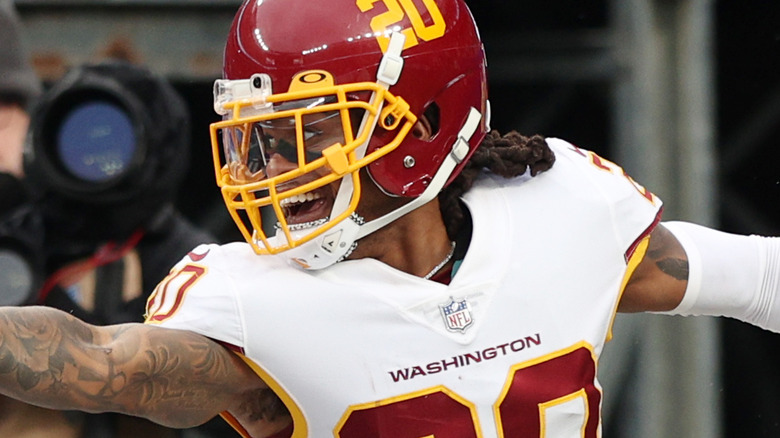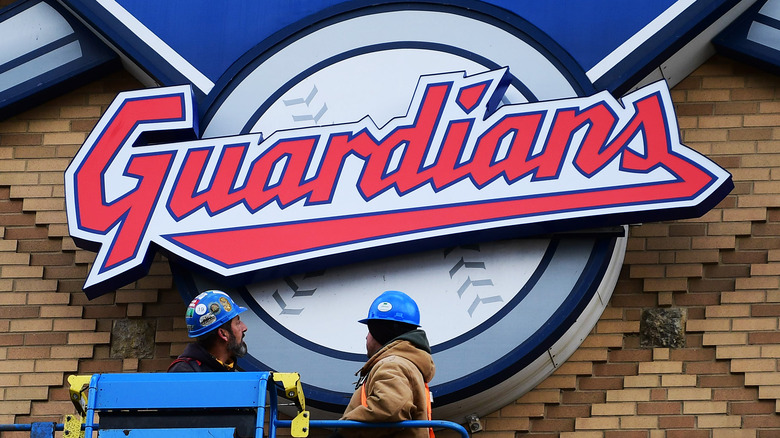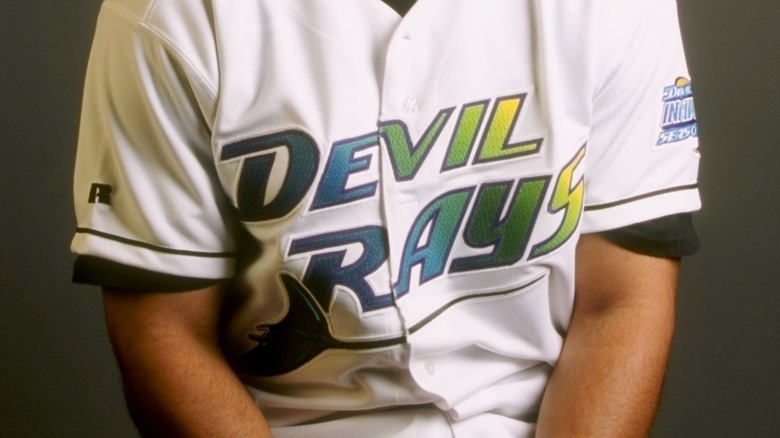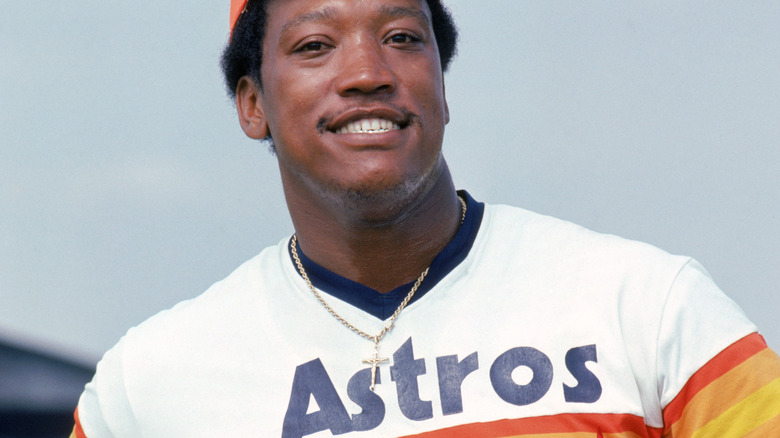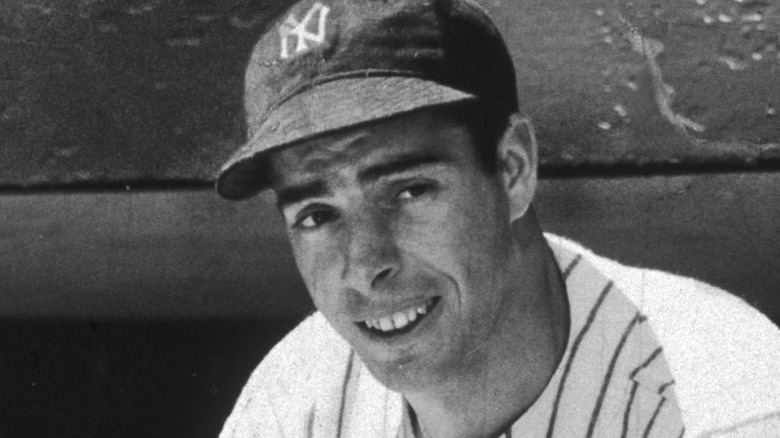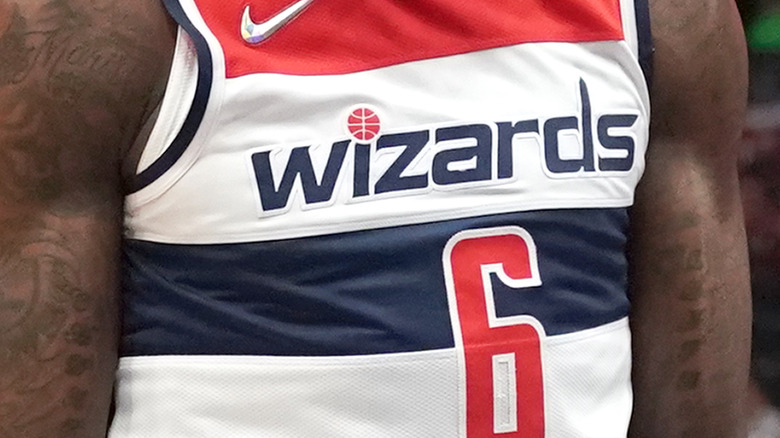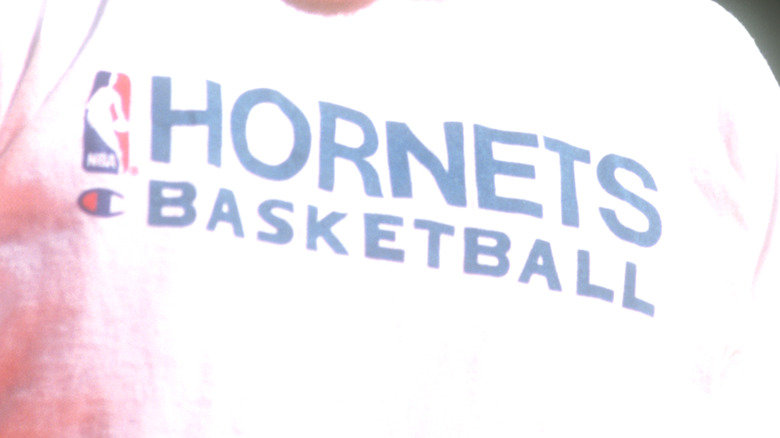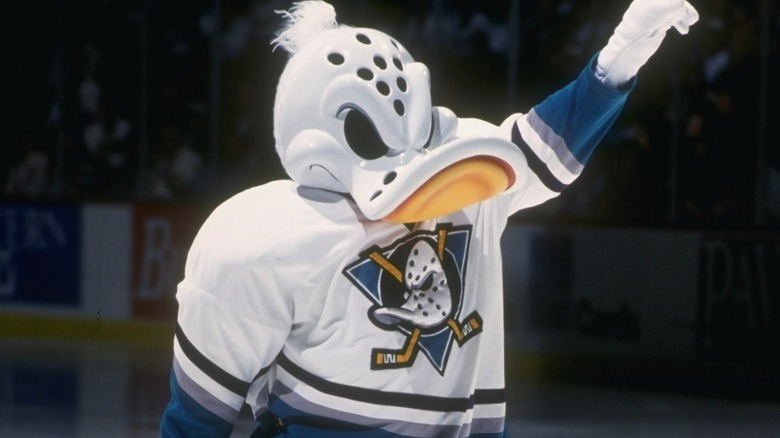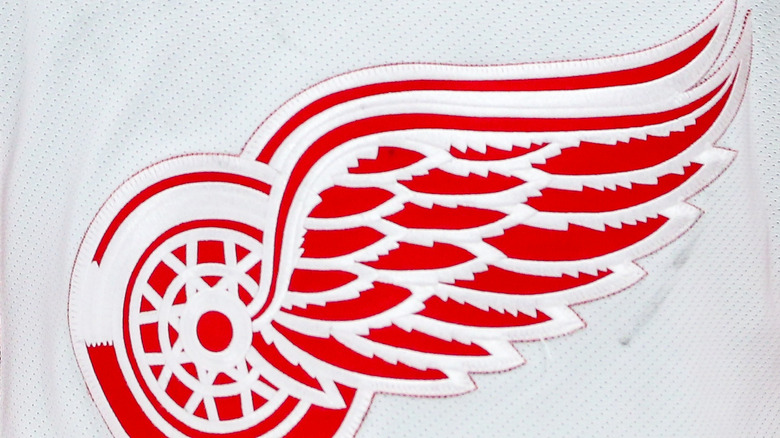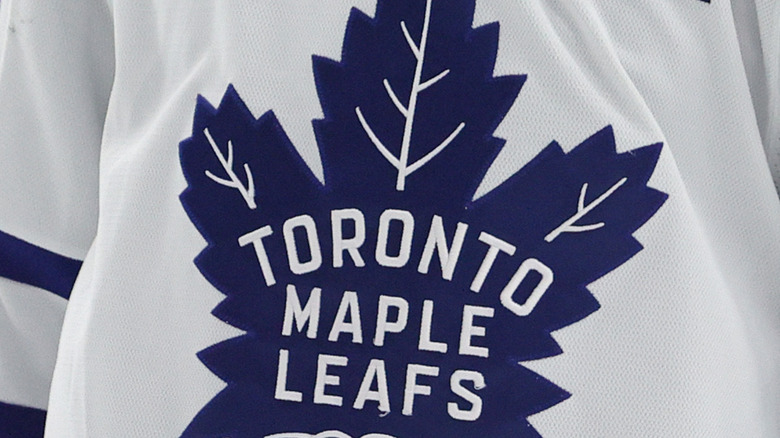The Real Reason These Sports Teams Changed Their Names
A tremendous amount of thought, planning, market research, and, in the present day, focus-grouping goes into selecting just the right name for a major professional sports franchise. An NFL, NBA, NHL, or Major League Baseball franchise is a potentially billion-dollar business, and everything has to go correctly for it to succeed, and that means finding a name that's catchy, cool, reflects local history or culture, sounds intimidating, implies unmatched sports prowess, and looks good on player jerseys and fans' T-shirts and hats. If done properly, a name may eventually be held in high esteem and become part of the vernacular — well-determined titles like the Raiders, Celtics, Cardinals, or Mets.
Every once in a while, a team has to go back to the proverbial drawing board and adopt a new name after their old one proves to be a flop, either extremely goofy or unpopular or because changing cultural modes and a more enlightened populace demand it. Here are major North American sports teams that changed their names and the many reasons why they did it.
New York Jets
By 1960, the decades-old NFL fielded 12 teams, and that year, the rival American Football League started play with a collection of eight teams. The NFL would later absorb the AFL, including the New York Titans. According to Lou Sahadi's "The Long Pass" (via NJ.com), owner Harry Wismer came up with the name. In Greek mythology, the titans are powerful and mighty gods. "Titans are bigger and stronger than Giants," Wismer was reportedly fond of saying, a not-subtle putdown of his NFL cross-town rivals, the New York Giants.
Wismer was wrong. The New York Giants had won four NFL titles by that point, while in their first three seasons, the Titans amassed a mediocre 19-23 record and also struggled financially, with player paychecks frequently bouncing. In November 1962, the AFL took control over the team and then sold it to a new ownership group led by entertainment industry tycoon Sonny Werblin. The new management aggressively pushed for a reset, changing the team's colors from blue and gold to green and white, moving the team from the old Polo Grounds to the brand-new Shea Stadium, and officially dumping the Titans name in favor of the Jets. Such a name oozes the sensibility of the early 1960s, when commercial intercontinental jet travel was in the midst of a glamorous boom period. Additionally, Shea Stadium sat near two of New York City's three airports.
Tennessee Titans
Texas oilman Bud Adams helped found the American Football League, and in 1960, his team, the Houston Oilers took the field. The Oilers won two AFL titles, weathered a merger with the NFL, and were a respectable team that frequently made it into the playoffs, but in 1997, they moved to Tennessee. According to CBS News, the new Tennessee Oilers played its first season's home games in Memphis, attracting a league-worst average of 28,028 fans, which didn't increase much when it moved to Nashville for subsequent seasons. In the summer of 1998, Adams announced his intention to rename the Tennessee Oilers, hoping a new name would give the team a boost on the field.
Texas is a major hotbed of the oil industry, and Tennessee isn't, so "Oilers" didn't mean much to Nashville football fans. Adams decided on the alliterative Tennessee Titans, which hinted at strength and a sense of place. "Titans come from early Greek mythology and the fact that Nashville is known as the 'Athens of the South' makes the Titans name very appropriate," Adams said. "If we continue to play like Titans, we'll be in the playoffs in January." The strategy worked and Adams' prediction proved correct — the Titans played in (but lost) the franchise's first ever Super Bowl in early 1999.
Washington Commanders
The Boston Braves joined the 12-year-old National Football League in 1932, but after just one season with that name, owner George Preston Marshall decided to change it to something that similarly traded in Native American cliches and iconography, but more explicitly off-color. According to the Washington Post, it's franchise lore that the Boston Braves became the Boston Redskins — a common and offensive slur for Native Americans in the early 20th century, per NPR, to pay tribute to the team's coach, William "Lone Star" Dietz who claimed Sioux ancestry. Marshall also told reporters that the switch was more of a marketing decision — he didn't want his upstart football team to get confused with the city's popular baseball team, also called the Boston Braves.
Just before the 1937 season, the franchise moved from Boston to Washington, D.C., keeping name up until 2020, when, in the wake of years of outcry, calls to change, and sponsor pressure, particularly in the wake of the Black Lives Matter-adjacent reckoning with institutional racism, owner Dan Snyder agreed to cut the name and its Native American head logo, via AP. For two seasons, the squad played as the Washington Football Team, until February 2022, per NBC Sports. According to ESPN, the franchise decided on the Washington Commanders as a nod to the military, which "embodies the values of service and leadership that characterizes the DMV [D.C., Maryland, Virginia region]," said team president Jason Wright.
Cleveland Guardians
American sports teams have a long history of picking names that play on Native American imagery and warrior stereotypes. One of the oldest franchises with such a moniker is the simply and bluntly named Cleveland Indians, operating with that name since 1915, following stints as the Blues, Bronchos, and Naps.
In 2021, the squad announced that it would officially drop Indians in favor of a new name, according to ESPN. After the Black Lives Matter protests of 2020 ignited a national conversation about socially and culturally ingrained racism and the use of potentially racist imagery, team officials engaged in months-long discussions about if and what to adopt in the absence of Indians, a decision that came three years after players stopped sporting the team's red-faced, often-protested, cartoonish Native American caricature "Chief Wahoo" on their uniforms.
When Cleveland's baseball team takes the field in 2022, it will be their first full season as the Cleveland Guardians, named for the Art Deco-style sculptures that stand on each end of the city's Hope Memorial Bridge.
Tampa Bay Rays
The Tampa Bay Devil Rays are the 15th team in Major League Baseball's American League, starting play in the 1998 season. According to MLB.com, the franchise's first owners had a name all picked out, the Tampa Bay Stingrays, after the fierce water creature found in abundance around Florida (via Naples News), but they couldn't use it because "Stingrays" was prohibitively trademarked by a minor league team in Hawaii. Management altered the name just slightly to Devil Rays, keeping the animal name but adding in an adjective that noted toughness and fearsomeness.
The name was decidedly not well-received. For years, the Devil Rays office received correspondence from fans asking to change the name; according to the Tampa Bay Times, many Christians thought the moniker glorified Satan. After Stuart Sternberg acquired the team, he acquiesced to public sentiment and demand, and after the 2007 season, via ESPN, the Tampa Bay Devil Rays became the more straightforward Tampa Bay Rays. "I think this gives us as an organization an identity," Sternberg said at the time. "We were tied to the past, and the past wasn't necessarily something we wanted to be known for," he added, referring to the team's lackluster 645-972 all-time record to that point
Houston Astros
The Houston Colt .45s joined the National League in 1962, and as the first Major League Baseball team in Texas, site of many legends and lore of freedom fighters and the Wild West, directors named the franchise after the Colt .45, a revolver and ammunition associated strongly with that era, manufactured by the Colt Firearms Company. But after three so-so seasons as the Colt .45s, the team rebranded after the 1964 campaign as the Houston Astros. According to the Houston Chronicle, the change made sense — the franchise was about to move into the Astrodome, a state-of-the-art, future-forward, domed stadium with a space-age name that alluded to NASA's operations in the city. And so, Houston, where astronauts worked, became the home of the Astrodome and the Astros.
The new name was also born out of financial issues. With Colt .45s merchandise selling well, the Colt Firearms Company was poised to ask for a sizable share of the profits from stuff that bore the name of one of its most famous products (via The Sporting News). Team president Roy Hofheinz didn't necessarily want to hand over any money to an outside party, so the name change was initiated.
New York Yankees
Perhaps the most famous sports team in the world, and certainly the most legendary team in American baseball, the New York Yankees' name is as iconic and well-known as its pinstripe jerseys and all-time great players like Babe Ruth, Mickey Mantle, and Derek Jeter. And yet, Yankee, a 1700s likely Dutch-derived (via Britannica) was a slang term for a resident of New England, associated with the American Revolution because of the traditional song "Yankee Doodle."
But it was not the team's official name until well into its history. According to Major League Baseball, the New York Evening Journal reported on the spring training activities of the New York Highlanders in April 1904, proclaiming "Yankees Will Start Home From South Today." A few days later, the Journal ran the headline, "Yankees Beat Boston." Other area newspapers (including the New York Press) started calling the team the Yankees, too, on account of how it was shorter and thus easier to fit in a headline than the cumbersome Highlanders. By 1913, the New York Highlanders had fully transitioned into becoming the New York Yankees.
Washington Wizards
The number of name changes executed by the NBA team currently headquartered in Washington, D.C., is five, which is more than four, the number of times the franchise has made it to the NBA Finals. Entering the NBA in 1961 as the Chicago Packers, they were the Zephyrs for the next season, then moved to Baltimore and became the Bullets. The 1973-'74 campaign saw a move to the nation's capital, and a switch to Capital Bullets, abandoned a year later in favor of the Washington Bullets. That name stuck for more than 20 years, until the conclusion of the 1996-'97 season when a violent act provoked another change.
According to NBC Sports, Bullets owner Abe Pollin was good friends with Israeli prime minister Yitzhak Rabin, assassinated at a peace rally in November 1995. "My friend was shot in the back by bullets," Pollin announced four days after Rabin's funeral. "The name 'Bullets' is no longer appropriate for a sports team." Also prompting the shift: At the time, the Washington, D.C., area was experiencing a wave of violent crime and gang activity. Pollin established a 1-800 number to allow fans to vote on a new name, and the winner was the Washington Wizards, edging out the Sea Dogs, Express, Dragons, and Stallions.
Charlotte Hornets
Metropolitan Charlotte has been the home of two teams technically named the Charlotte Hornets, while New Orleans hosted an iteration, too. According to ESPN, the Hornets played in North Carolina from 1988 to 2002 until owners George Shinn and Ray Wooldridge (per ESPN) moved the team to New Orleans, seeking to right declining attendance and profits. The NBA quickly awarded Charlotte an expansion team, and the Bobcats hit the floor in the 2004-2005 season. Then in 2013, the relatively new New Orleans Hornets decided to change its name to the Pelicans. Owner Tom Benson told ESPN that Hornets "didn't mean anything" to the New Orleans community, as opposed to the pelican, which he later said "is a symbol for our city and our region, and we're excited to start a new era in Louisiana basketball history."
With the New Orleans Hornets rebranding as the New Orleans Pelicans, that meant Hornets was free to use. In 2014 (per ESPN), Charlotte reclaimed its old name, eschewing Bobcats and starting the second era of the Charlotte Hornets. It was a switch aggressively pursued by owner — and NBA legend – Michael Jordan.
Anaheim Ducks
In 1992, 1994, and 1996, Walt Disney Pictures released three live-action sports comedies about the plucky, motley crew of an ascendant youth hockey team: "The Mighty Ducks," "D2: The Mighty Ducks," and "D3: The Mighty Ducks." In 1993, right in the middle of the franchise's run, the National Hockey League expanded, and the Disney corporation was announced as the owner of one of the new teams, to be stationed in Anaheim, California, not far from the Disneyland theme park. In a bit of savvy cross-property marketing, according to ESPN, Disney chairman Michael Eisner named the hockey team after the hockey movies, dubbing the squad the Mighty Ducks of Anaheim.
In 2006, Disney divested itself of its NHL franchise, selling off the Mighty Ducks of Anaheim to Henry and Susan Samueli. Prior to the 2006-2007 season, and after consulting with season ticket holders, the new owners announced that they would rename the team to the simpler Anaheim Ducks. As it was no longer affiliated with Disney, it made sense to drop the movie-promoting "Mighty."
Detroit Red Wings
Currently — and since 1933 — known as the Red Wings, Detroit's NHL franchise is one of the most storied teams in hockey, having hoisted the Stanley Cup in victory 11 times. Well before the team played in the Motor City, it hit the ice thousands of miles away in another country — the British Columbia-based Victoria Cougars won the Stanley Cup in 1925. Slightly more than a year later, the team moved from western Canada to the upper Midwest of the U.S., becoming the Detroit Cougars, according to ClickOnDetroit. That old name from the old team didn't last, nor did its success. According to Vintage Detroit, local sportswriters thought the team's losing habit might be reversed with a new name and held a contest in 1930, with Detroit Falcons coming out as the winning entry.
In 1932, Canadian-born businessman James Norris bought the Falcons and immediately rebranded the team again, to Red Wings. It's a nostalgic allusion to the Winged Wheelers, a Montreal club hockey team for which Norris once played.
Toronto Maple Leafs
The 1917-1918 National Hockey League season was the organization's first, with seven teams, all based in the major Canadian cities of Montreal, Ottawa, and Toronto, taking the ice. The Toronto Arenas won the first ever NHL-affiliated Stanley Cup that year, beating out Pacific Coast Hockey League champions the Vancouver Millionaires. That didn't help on the business side of things, though, and after the 1918-'19 season, the Arenas removed themselves from the NHL to regroup. The team came back to the league for 1919-1920 under a new ownership group. At the time, Toronto had a large Irish-Canadian population, and in seeking to convince members of that community to buy tickets, the Arenas rebranded as the Toronto St. Patricks, or the St. Pats, for short.
In the late 1920s, according to the NHL, fired New York Rangers general manager Conn Smythe returned to his hometown of Toronto, bought the then-struggling St. Pats, and changed the name to the Toronto Maple Leafs. Had Smythe not stepped in, the franchise had plans to move to Philadelphia. The new owner not only kept the team in Canada but upped its level of Canadian pride. The maple leaf is a national symbol of Canada and appears on the country's flag, while Smythe was inspired by the Maple Leaf Regiment, a Canadian military unit that had fought in World War I.
